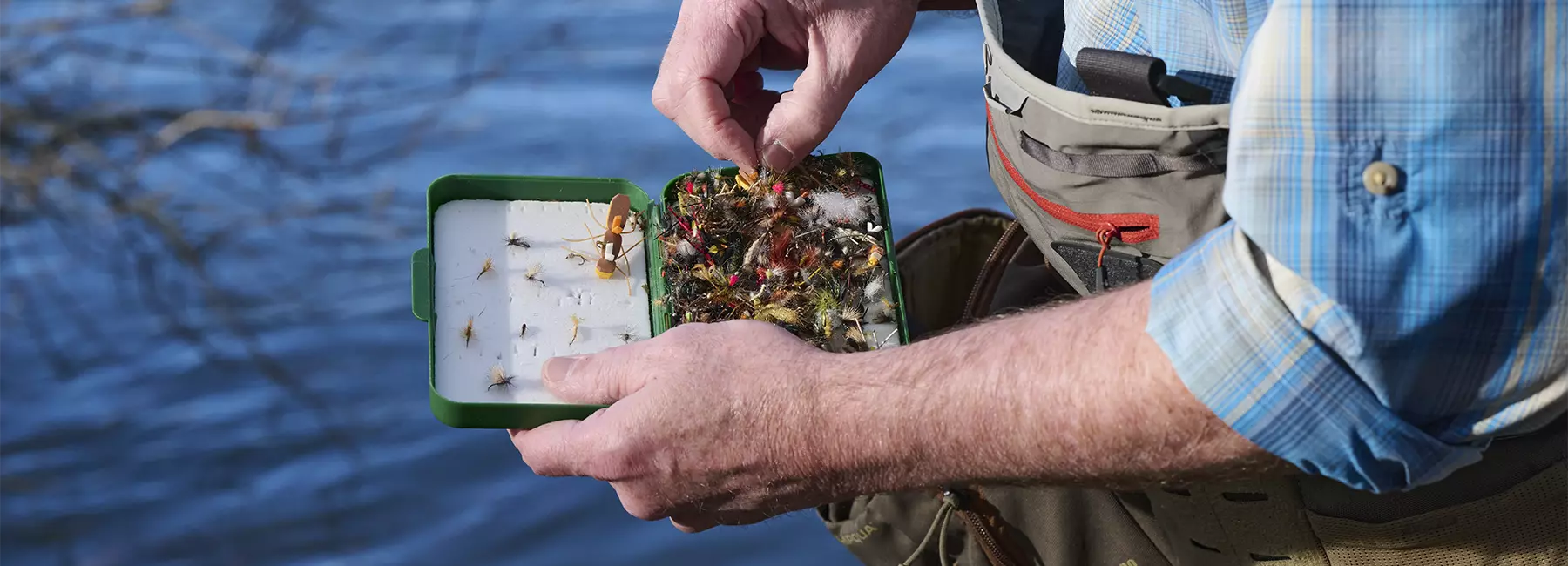The Well Stocked Fly Box
by Bryan Quick
When I was guiding, I would spend at least an hour the night before each trip preparing all of the things I’d be taking with me the next day. Much of this time was spent going through my fly collection grabbing the most likely flies I would be using and organizing them in my bag or sling. On a difficult day when the fish had tight lips, after having swapped the latest go-to flies off of the rigs and trying several recent go-to patterns, I would grab the box filled with bugs that had been my “catching” patterns in the past. This often saved the day.
Now that I no longer guide, I’m not spending as much time on the rivers and I don’t have that up-to-the-minute info on what flies have been working. And I like to take advantage of any fish that are feeding up top – who wouldn’t? So, the question begging to be asked is – what flies should you always have? I’ll lay out my strategy that has paid dividends more than once this past year.
Fly Selection Principles:
The three fly pattern characteristics, in order of importance, are:
- Size
- Shape
- Color
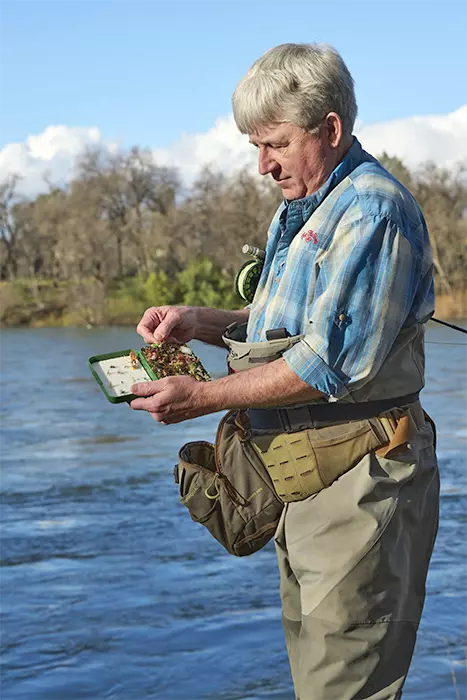 These principles are irrefutable. It goes without saying you can’t have every possible permutation that will cover every watershed you may find yourself fishing. However, breaking it down into patterns that closely resemble the dominant insect species in size, shape and color will go a long way towards meeting your goal of having something that will work in any given situation.
These principles are irrefutable. It goes without saying you can’t have every possible permutation that will cover every watershed you may find yourself fishing. However, breaking it down into patterns that closely resemble the dominant insect species in size, shape and color will go a long way towards meeting your goal of having something that will work in any given situation.
Generally, the four main orders of aquatic insects which trout feed on are caddisflies, stoneflies, mayflies, and midges. Cover these, and with a couple of terrestrial patterns, you should be well on your way to being prepared for most situations. I’ll cover each of these separately, and to sum up I’ll have a list of the flies I carry with me any time I’m on a trout stream.
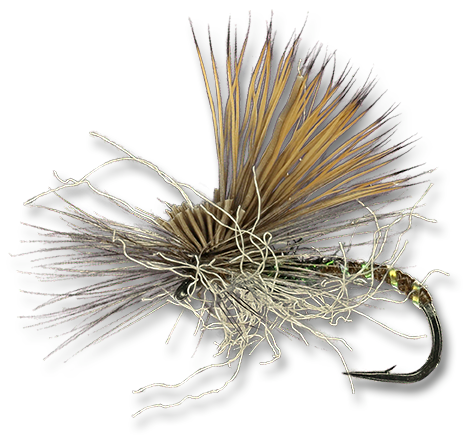 Caddis Fly Patterns:
Caddis Fly Patterns:
A strong box for caddis flies will contain pupa, emerger and dry patterns. Caddisfly larvae primarily build cases and attach themselves to the cobble in riffles and tailouts. The closest relative to moths, cadisflies all go through the same life stages and will build a cocoon and pupate prior to making their emergence as an adult. Where they differ from moths is they will be able to swim just prior to emerging and this is where you can target fish. Good patterns to simulate most of the species would include a Bird’s Nest or a Poopah. A half dozen of either pattern in sizes from #12 – 16 will cover most situations. For emerging insects – and this is one of my favorite methods to target fish in the summer months – swinging a Birds’s Nest, Poopah or soft hackle with a floating line just under the surface can be super effective. And it is always fun to feel that grab! Lastly, on the rare occasion you will find fish targeting spent caddis, either an Elk Hair Caddis or a Missing Link in #12-16 will do the job. You can dead drift them, or in the evening during the hatch, a skated dry will often bring some big, splashy takes.
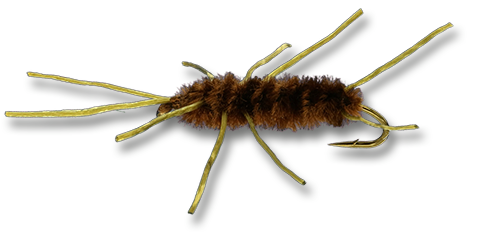
Stonefly Patterns:
We are lucky to have quality water in the drainages here in Northern California and in each there is at least a small, but significant population of salmonflies. Golden stoneflies are present in many of our streams too, and these two generally make up the majority of the stones that will catch fish. Again, the majority of these big bugs trout will eat in their lifetime are going to be the nymph stages. In addition to being the largest, salmonflies are also the longest lived of the stonefly species. After having hatched from an egg, they will hang out together with age-related cohorts. A strategy stream insects use to populate different areas within a watershed is to drift downstream in the current (behavioral drift). This behavior usually occurs at night when they are least likely to be intercepted by a hungry predator such as a rainbow trout. And in the eyes of a trout, a large stonefly nymph is not just a cheeseburger, but one served with fries and a shake! Keeping this in mind, trout will key in on what they are seeing repeatedly and can position themselves to intercept this food easily and with little effort. When I am rigging up a nymph outfit at the beginning of the day, it usually will begin with a stonefly pattern in case the previous night the bugs decided to change their address.
A solid nymph pattern for stoneflies is the Pat’s Rubberlegs. I always have at least a dozen size #6 & 8 Pat’s Rubberlegs in brown or black. Super effective golden stone patterns are the Tungsten Bead Solitude Golden Stone in #8 & 10, and the Beaded Biot Poxyback Golden Stones are good as well. These would be the baseline for my box.
The other time stoneflies are susceptible to trout are when they are laying eggs, or ovipositing. As adults only spending a day or two out of the water to complete their lifecycle, they are not expert aviators and clumsily fly down from the tree canopies to oviposit in riffles. They don’t appear to be particularly adept at judging distance and will often splat into the water and become stuck. Additionally, their tree climbing ability is lacking and as they migrate down limbs will often fall into the stream before they can get through their Takeoff Checklist. Good flies for this life stage are the venerable Chubby Chernobyls in various colors, in size #6. I like brown, but the size and shape are what is most important. An additional benefit of having a dozen of these on your person, along with a good nymph or two, is that you can rig a dry-dropper setup to pick off every fish in the riffle.
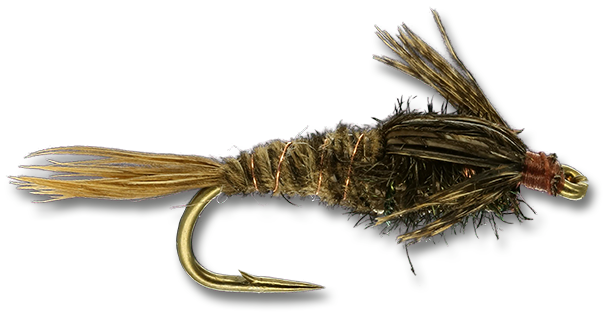
Mayflies:
This order of benthic invertebrates is probably the most varied in size and coloration. This is where generalization can really pay off. Again, most of the time trout will be keying on the nymphal stage of the mayfly. Each species has its own life history, i.e. what types of water they inhabit, how long they live as nymphs, and how they emerge. But all mayfly species have roughly the same shape in their nymphal stage. From a fly fisher’s standpoint, this is good. The Pheasant Tail Nymph in sizes #10 – 20 will cover nearly every species you will encounter if you leave out the Hexagenia. The form of the PT is a near dead-ringer of just about every mayfly. You just need to match the size.
If you are lucky enough to be on the water when the fish are taking dries, the other pattern you need in your box is the Adams. We were sitting on the Henrys Fork this past June waiting for a Green Drake hatch with a bunch of flies that would match them perfectly. Adults, emergers, you name it, I tied it and we fished it. The fish and drakes had other ideas and as the day progressed a smaller mayfly began to come off in force – it turns out they were Flavinea (often referred to as baby green drakes). Luckily, a #14 Adams fooled every fish I put it in front of. Whether your preference is the Parachute Adams or the plain version, you should have at least a half dozen of every size from #12 – 20
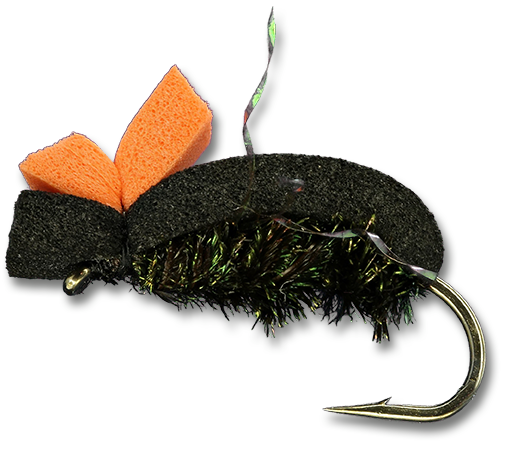
Terrestrials:
We have a nice lakeside cabin in the foothills outside of Redding at Rock Creek Lake, and this old timber mill pond holds some really nice rainbows and browns. Every year beginning in May I remind the groups going in they need to have their ant patterns. Nothing is so humbling as an ant fall, and I’ve been stumped on the San Juan changing out Baetis patterns in July only to see a huge Carpenter Ant plastered to the front of my waders.
Ant patterns, hoppers and beetles are good to have. As I mentioned before, a Chubby Chernobyl selection is a great investment – it works pretty well as a hopper substitute as well as a dry-dropper fly. We use the Hi-Viz Beetle in sizes #12 & 14 in our local mountain lakes, stillwaters like Manzanita, Baum, Rock Creek Lake and the two on Antelope Creek Ranch. In the afternoons and evenings these can be deadly fished near bushes. And there are quite a few places you can fool fish with this pattern when you have trout chasing Water Boatmen.
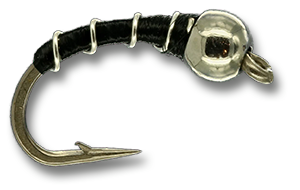
Midges:
These often tiny insects are found in nearly every watershed and can form a large portion of a trout’s diet depending on what other insects happen to be present in the current stream or water column at the time. In their larval form these will be found on the cobbled beds of rivers or on the bottom of lakes. After they pupate and prepare to emerge, they become buoyant and will drift up in the water column where trout intercept them. In lakes, this can be a primary form of food and the best fly to imitate these is the Zebra Midge. A half dozen in sizes #14 – 20 in black and red should cover your bases. They can also work as a Blue Wing Olive nymph pattern in a pinch.
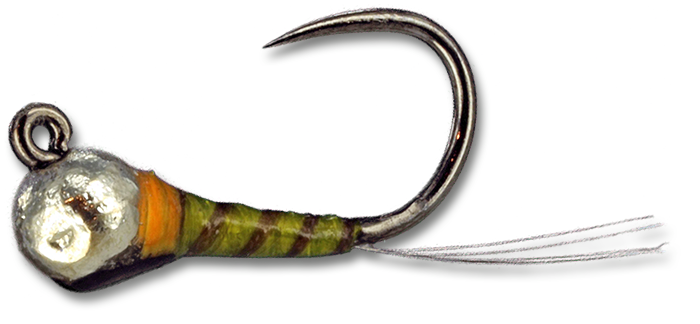
The Other Flies:
Some patterns just work…who knows why, but I have ones that have produced for me and are favorites. The Olive Hot Spot is one. I caught a bunch of fish with this pattern on the Clark Fork in Montana last summer. Another fly that I have a love / hate relationship with is the Weiss BP Nymph – it is remarkably effective, but it can be tough to get 5x through the eye, and if you are applying max pressure on a big fish, it can bend out. Recent updates to the hooks have improved the odds on big fish though. So, if you have a fly you are confident using, make sure you have them in your box as you never know when it will save the day for you.
JT’s suggestion includes bringing some leech patterns, so of course the venerable Wooly Bugger in olive, black and brown is a great choice. They aren’t expensive and can be fished as a crayfish as well as a sculpin. In still waters and up on Fall River there are tons of leeches, so watch out when you’re skinny dipping! The good news is that trout love them.
The Answer to All of Your Questions:
You can’t buy the entire fly shop inventory, or maybe you can. My strategy is to pick out one or two dozen flies every time I go fishing. A half dozen of these are going to be flies I know may not be the hot fly, but will go towards filling in the gaps in my go-to box. Whether it’s your budget, weight or size limitation, you have to make compromises, and here I’ll summarize two options for you, a “good box”, and a “better box”.
Good Box:
Better Box (everything in the Good Box, plus the following:)
-
- #12 – 14 Cinnamon Poopah
- #18 – 20 Pheasant Tail Nymph
- #18 – 20 Adams or Parachute Adams
- #14 – 16 Dark Missing Link
- #8 – 10 TB Solitude Golden Stone
- #14 Flying Ant
- #6 – 8 Wooly or Crystal Bugger, Olive, Black and Brown
These patterns are all reliable producers, making them a great starting point for nearly any situation you may encounter. You will be covered from here in Northern California to trout streams as far away as New Zealand, and everything in between. It may take a few years to fill in the gaps in your collection, but it’s a worthwhile goal. As I’ve fished in places like Idaho and Montana, these patterns have proven useful time and time again. For those unique hatches specific to each area, I always make sure to visit local fly shops for the patterns that work best for the locals. So, the next time you’re in a small town, pick up a dozen flies and support the local fly shop!
